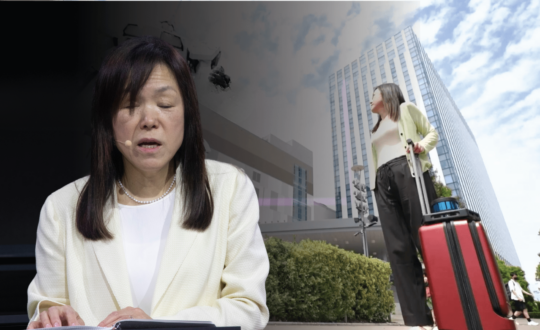In a groundbreaking presentation blending history, technology, and storytelling, Marco Tempest, Creative Technologist, Strategy Consultant, and Directors Fellow at the MIT Media Lab, revived the visionary collaboration between Ada Lovelace and Charles Babbage. This unique event utilized artificial intelligence and real-time storytelling to explore Lovelace’s foresight and Babbage’s ingenuity, shedding light on the origins of modern computing.

It was June 5, 1833, in London. Ada Lovelace, a 17-year-old aristocrat, mathematician, and visionary, was on her way to a party at Dorset House. There she met Charles Babbage, a 42-year-old scientist obsessed with numbers. Babbage, the author of a book on the calculation of insurance premiums and another on the decline of science, found a kindred spirit in Ada. Despite their age difference, they bonded over their shared passion for mathematics and science.
“My dear Countess, I’m glad you appreciate the value of such a machine, and yet I seem to live in a country that is incapable of estimating it,” Babbage confided in Ada about his frustrations with the lack of appreciation for his inventions. He introduced her to his plans for the Difference Engine, a mechanical calculator far ahead of its time. While many failed to grasp its potential, Ada immediately saw the revolutionary possibilities of this calculating machine.
In 1837, as Queen Victoria ascended to the throne, Babbage conceived the Analytical Engine, a more advanced machine that used punched cards for computations. This mechanical marvel of gears and wheels was capable of processing numbers far beyond anything previously attempted. However, the complexity of the machine left many confused.
“One fellow asked me to explain the principle of the machine in two words,” Ada recalled. “The method of differences,” she replied. “That’s four words. I can see why people were confused,” she added with a smile, highlighting the challenge of conveying the machine’s groundbreaking nature.
Despite Babbage’s struggles to gain support, a pivotal moment came in 1843 when Italian mathematician Luigi Federico Menabrea wrote a paper on Babbage’s machine. Ada translated Menabrea’s paper into English, believing it would draw attention to the engine in England. Her translation went beyond the original, suggesting that the machine could do more than calculate numbers—it could create art and music. She envisioned a future where such machines could compose elaborate concertos, sonatas, and arias of any degree of complexity.
“Imagine an engine that could create art or music, compose elaborate concertos, sonatas, arias of any degree or complexity—the possibilities are endless,” Ada wrote. This vision led her to write what is considered the first computer algorithm, making her the world’s first computer programmer.
“Ada’s correspondence is filled with metaphor, philosophy, and grand dreamlike visions,” Tempest noted. Despite her declining health, Ada’s optimism remained unshaken. “Those who’ve learned to walk on the threshold of the unknown worlds may then, with their fair white wings of imagination, hope to soar further into the unexplored amidst which we live,” she famously wrote.
Ada proposed funding the construction of the Analytical Engine, but Babbage’s stubbornness led to the project’s demise. She passed away in 1852 at the age of 37, but her ideas endured. “That brain of mine is something more than merely mortal, as time will show,” she believed. Today, her foresight is recognized as the foundation of modern computing.

Marco Tempest’s presentation brought Ada Lovelace’s and Charles Babbage’s story to life using AI and innovative technology. The event showcased how gestures recognized by a camera could be analyzed to generate AI visuals in real-time, leaving the audience spellbound. “Those gestures being recognized by the camera and then analyzed and generating AI visuals on the spot—there’s so much calculation here, my mind was blown,” remarked an attendee.
Tempest explained the workflow of his technology: “I’m using a laptop… I’m running a local image model here, using ComfyUI, an open-source tool which I wired a few extra magical things into. The voices are actually my voices, piped through a voice cloning model.” This blend of historical narrative and cutting-edge technology captivated the audience, demonstrating the potential of AI in storytelling.
“First of all, it’s fun. These tools are available to pretty much everyone right now, so it’s super democratized. Everyone can play,” Tempest emphasized. He believes that making these technologies accessible encourages creativity and exploration, particularly among younger artists and technologists.
Looking ahead, Tempest expressed interest in exploring robotics and other systems that could inhabit similar spaces. “Anything that is even remotely related to our stories, our narratives, should be explored,” he said, highlighting the endless possibilities of merging technology with storytelling.
Ada Lovelace’s and Charles Babbage’s story is not just a tale of historical significance but a beacon of inspiration for future generations. Their visionary ideas continue to influence the realms of science and art, proving that the power of imagination knows no bounds. As Tempest aptly concluded, “Thank you, Ada, for the foresight that many lacked and the vision you shared. You truly are the enchantress of numbers.”














